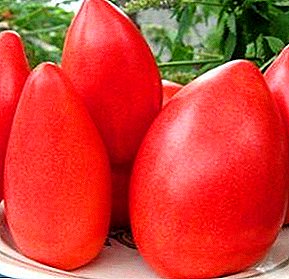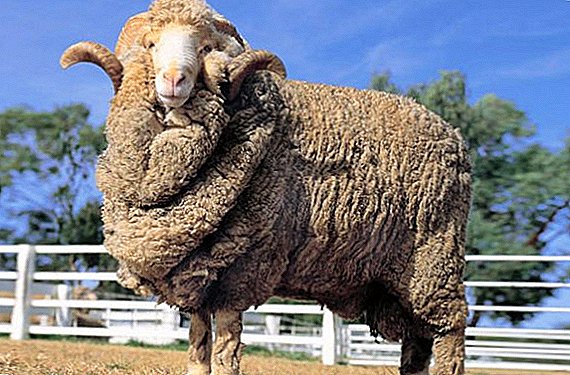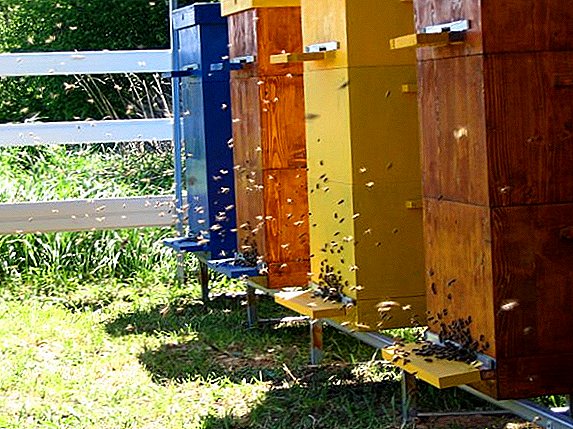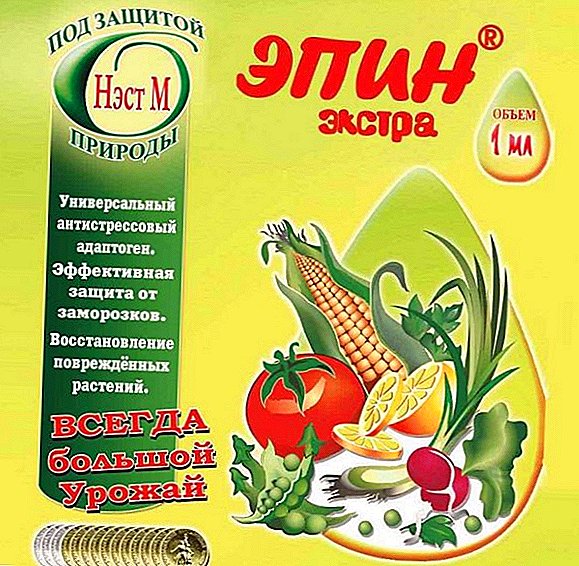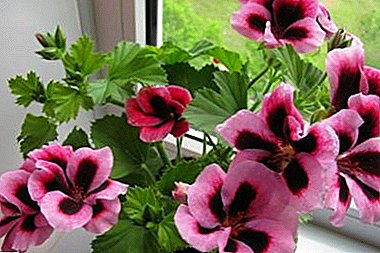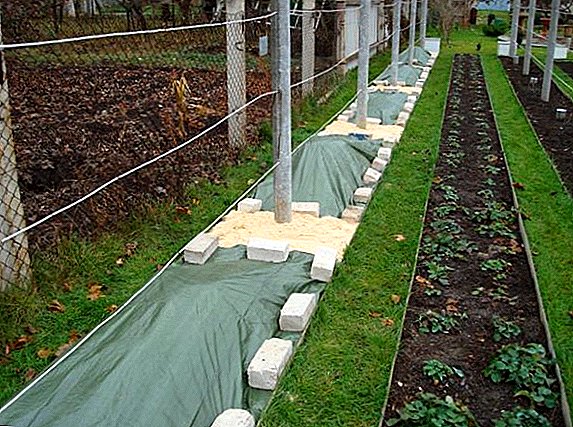 At the end of the summer season you need to take care of the proper wintering of all trees, bushes and plants. Particular attention should be paid to the grapes, as it is a heat-loving plant that requires special care. Let's look at how to properly prepare the grapes for winter.
At the end of the summer season you need to take care of the proper wintering of all trees, bushes and plants. Particular attention should be paid to the grapes, as it is a heat-loving plant that requires special care. Let's look at how to properly prepare the grapes for winter.
Before processing (autumn pruning)
After you harvest the grapes, the last foliage will fall from its vines - you can start pruning. The juice in the vines stops its movement completely after the fall of all the leaves in the autumn period. At this time, you can begin to cut off the extra shoots, leaving only the branches that will definitely bear fruit next year. Do not forget to cut the branches that are damaged, sick, broken, dried, or just quite old.
Pruning grapes too rather complicated process requiring skill and knowledge, so we'll talk about it in another article. Here, cutting off extra branches on the bush should be mentioned only because if you plan to carry out the autumn processing of the grapes, thus protecting it against diseases and pests, then it should be done only after preliminary cutting of the vines.
To achieve high-quality and tasty grape harvest, read more about the scheme of pruning grapes in the fall.

Spraying against diseases and pests
Spraying of grapes before shelter for the winter is carried out in order to get the vines from pests, diseases that "cling" to the shrub in the fall, when it is most exposed to external influence. Experienced winegrowers recommend carrying out such a spraying of the vineyard for preventive purposes in order to prevent the harmful effects on the plant.
You can treat the vineyard by any chemical means that will not harm it, but you should carefully spray each bush. For example, You can use to process:
- copper or iron sulphate;
- hydrated lime;
- Bordeaux mixture.

Also, summer residents who trust chemical fertilizers process the vineyard with folk remedies.
Did you know? In terms of nutrients, with the exception of fat, grapes are very close to milk.
Fungicides
Fungicides are chemicals for fungal plant diseases. They are widely used in viticulture as reliable, proven and inexpensive means which will be able to preserve the future harvest.
Experienced winegrowers who grow this plant for years, do not recommend treating the grapes in the fall before winter shelter with iron sulfate. This is due to the fact that, despite its action against insects, iron sulfate significantly weakens the plant's protection against the cold, your vineyard may simply not survive the winter. Since the autumn processing of grapes with iron sulfate should not be carried out without extreme necessity, it is better to hold it in spring. In the spring, the dosage of ferrous sulfate for spraying a plant is 500-700 g per 10 liters of warm water.
Check out the most popular grape varieties: Centenary, Crimson, Valiant, Taiga, Krasnostop Zolotovsky, Arochny, Riesling, Early Gourmet, Elegant and Tason.

Processing of grapes in the fall before shelter for the winter with copper sulphate should be carried out as follows. Immediately before carrying out the treatment, dilute half a cup of the product (or 100 g) in a bucket of water with a capacity of approximately 10 liters. Stir the copper sulfate granules well until completely dissolved in water. Spend a means of 2 liters per bush.
The next remedy is Bordeaux mixture which is a fungicide that can be bought at any plant protection store. But still it is better to cook it at home. Experienced agronomists-winegrowers recommend spraying the vine with a one-percent solution of Bordeaux mixture, since a large concentration can easily burn the vine. To prepare the necessary mixture, take a half cup of copper sulphate and a little more than half a glass of slaked lime, stir everything in a bucket of water. After that, you can begin processing. 
A very old and effective way to protect grapes from contamination is slaked lime. To begin, prepare a solution of quicklime, quench the lime in water (2 liters of water to 1 kg of lime in consistency), then pour 10 liters of water and mix the solution. Paint a brush or a broom, apply a solution to each bush and branch of grapes. Such a simple solution will reliably protect the plant from mold and mildew right up to the spring, even in case of a temperature increase. 
Important! We should not forget that the bushes should be treated with fungicides only in special clothes, avoiding contact with the skin and eyes.
Folk remedies
There are some folk remedies that will help protect the grapes from pests and fungus in the fall, they were developed over a thousand-year history of viticulture.
If you want to protect the plant from powdery mildew - take freshly harvested grass, place it in a pile and wait until a gray mold appears in the middle of the pile of grass. Then put the grass in a bucket of water, stir and drain. Then spray the resulting liquid with a vine. 
You can protect yourself from spider mites with this solution: Pour 2 kg of green tops of potatoes with 10 liters of hot water, then let the solution stand. After settling the agent, treat the bush with it.
Important! To protect the plants from the outbreak of mildew and odium - spray the vineyard with such means: "Folpane", "Ridomil", "Efal", "Cartocide".Using a solution of 5% iodine in a liter of water, you can protect the vine from gray rot, but the procedure must be carried out twice.

The most affordable folk remedy is a solution of infused onion peel. To prepare this miracle cure, pour half a bucket of onion peel with water, boil it for 20 minutes and let it brew for 24 hours. Then add to the water solution to 10-liter volume, add 20 g of honey, strain the solution and process the vine with it.
Grape shelter
Regardless of the latitudes of growth, these plants growers advise to cover for the winter right after the leaves have fallen. The easiest way to fill the bushes with earth, namely, pre-pruned and processed grapes are put in shafts to a depth of 30 cm and covered with a 20-centimeter layer of earth on top. Do not forget that the ground must be taken away from the bush, so as not to reveal its roots. However, this method is bad because rainwater can wash away the shelter, which will lead to frosting of the bush.
Did you know? Vineyards occupy about 80,000 square kilometers on Earth. From the harvest, 71% goes to the production of wine, 27% is consumed fresh and only 2% make raisins.

If the temperature in your latitudes changes significantly several times during the winter, as a result of which the snow melts and freezes again, need to use a more radical means.
To ensure the normal harvesting of the vineyard, read how to cover the grapes for the winter correctly.Cover the vine with a special substance: agrofibre and acrylic. It is necessary to cover both the vine and the roots, since they are most vulnerable to cold. Make an air cushion, covering the grapes with straw, bushes of tomatoes or other plants.

Cover the entire bush with a film, securing its edges on the ground (with bricks or earth). The film can replace slate. In the spring, remove the film or leave the vents, because the bushes can sopret.
Equip such shields with ramps to form an air gap, then close the ends with earth and sprinkle with earth. This design will serve you for many years, firmly holding the snow.
Only in this way can grapes easily survive the winter. And also will be able to please you in the spring with its dense foliage, and in the summer will be abundantly bear fruit.


